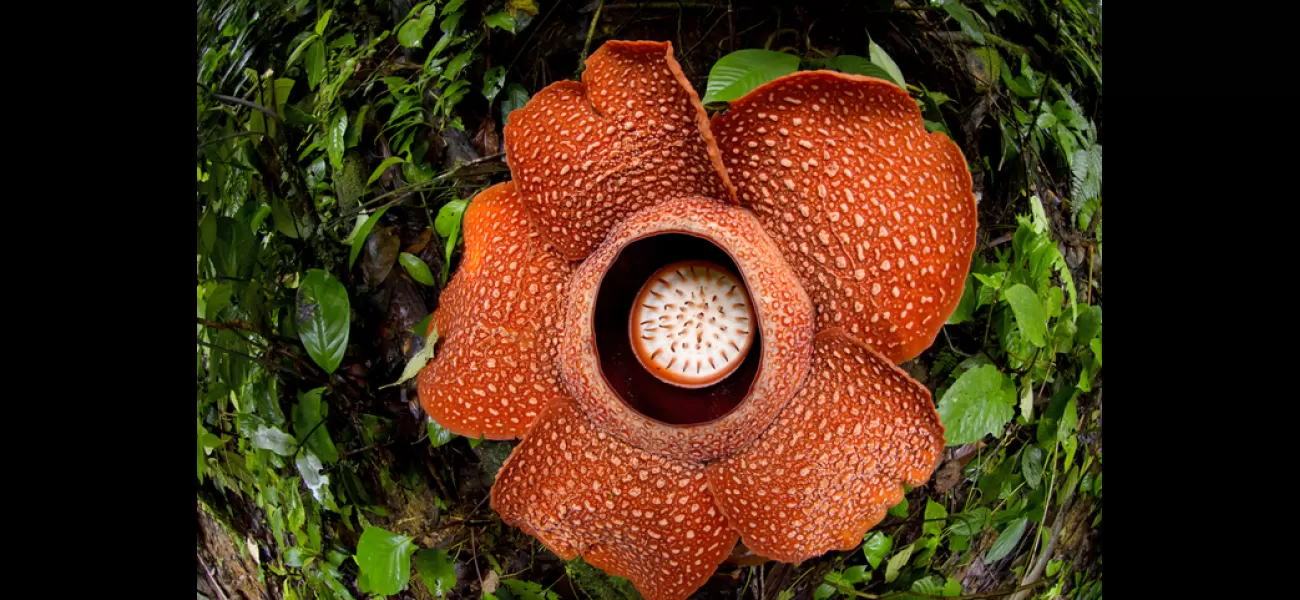This plant smells terrible, but it must be saved from disappearing forever.
It's known as the "corpse flower".
September 20th 2023.

The parasitic Rafflesia arnoldii, often called the corpse flower, is the largest single flowering plant in the world. Scientists have warned that this species, which emits a putrid odour like rotting meat to attract flesh-eating flies, is at risk of extinction due to extensive destruction of its habitat.
Dr Chris Thorogood, from the University of Oxford Botanic Garden and co-author of a new study, said: “We urgently need a joined-up, cross-regional approach to save some of the world’s most remarkable flowers, most of which are now on the brink of being lost.”
The team behind this paper argues that 25 species of Rafflesia are critically endangered, 15 are endangered, and two are vulnerable. To protect them, they are calling for better classification, more propagation – growing the plants elsewhere – and an extension of protected areas.
Dr Thorogood noted that the study "highlights how the global conservation efforts geared towards plants – however iconic – have lagged behind those of animals". He and his team are hoping that, just as pandas, tigers and elephants have become icons for endangered animals, Rafflesia, with its unique and often huge structure, can become a symbol for plant conservation.
Rafflesia was first discovered in Java, Indonesia, in 1797, by French botanist Louis Deschamps. As the plants are largely hidden, they are poorly understood and hard to spot. Additionally, they are difficult to propagate, with botanic gardens around the world having had limited success in growing them.
The team wants to encourage ecotourism built on the plants’ quirkiness so that local communities benefit from their protection. Adriane Tobias, a forester from the Philippines, said: “Indigenous peoples are some of the best guardians of our forests, and Rafflesia conservation programmes are far more likely to be successful if they engage local communities. Rafflesia has the potential to be a new icon for conservation in the Asian tropics.”
Dr Chris Thorogood, from the University of Oxford Botanic Garden and co-author of a new study, said: “We urgently need a joined-up, cross-regional approach to save some of the world’s most remarkable flowers, most of which are now on the brink of being lost.”
The team behind this paper argues that 25 species of Rafflesia are critically endangered, 15 are endangered, and two are vulnerable. To protect them, they are calling for better classification, more propagation – growing the plants elsewhere – and an extension of protected areas.
Dr Thorogood noted that the study "highlights how the global conservation efforts geared towards plants – however iconic – have lagged behind those of animals". He and his team are hoping that, just as pandas, tigers and elephants have become icons for endangered animals, Rafflesia, with its unique and often huge structure, can become a symbol for plant conservation.
Rafflesia was first discovered in Java, Indonesia, in 1797, by French botanist Louis Deschamps. As the plants are largely hidden, they are poorly understood and hard to spot. Additionally, they are difficult to propagate, with botanic gardens around the world having had limited success in growing them.
The team wants to encourage ecotourism built on the plants’ quirkiness so that local communities benefit from their protection. Adriane Tobias, a forester from the Philippines, said: “Indigenous peoples are some of the best guardians of our forests, and Rafflesia conservation programmes are far more likely to be successful if they engage local communities. Rafflesia has the potential to be a new icon for conservation in the Asian tropics.”
[This article has been trending online recently and has been generated with AI. Your feed is customized.]
[Generative AI is experimental.]
0
0
Submit Comment





